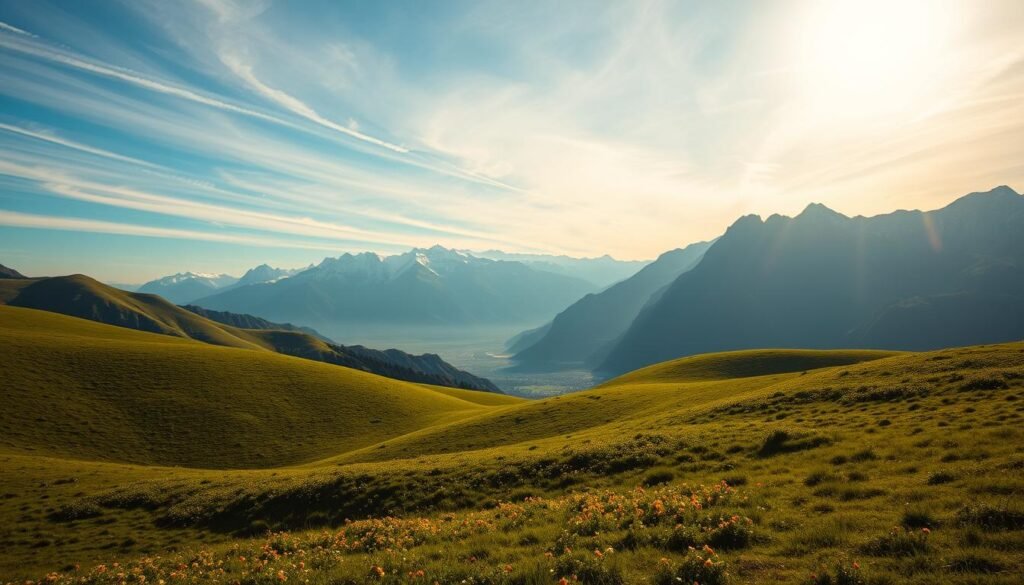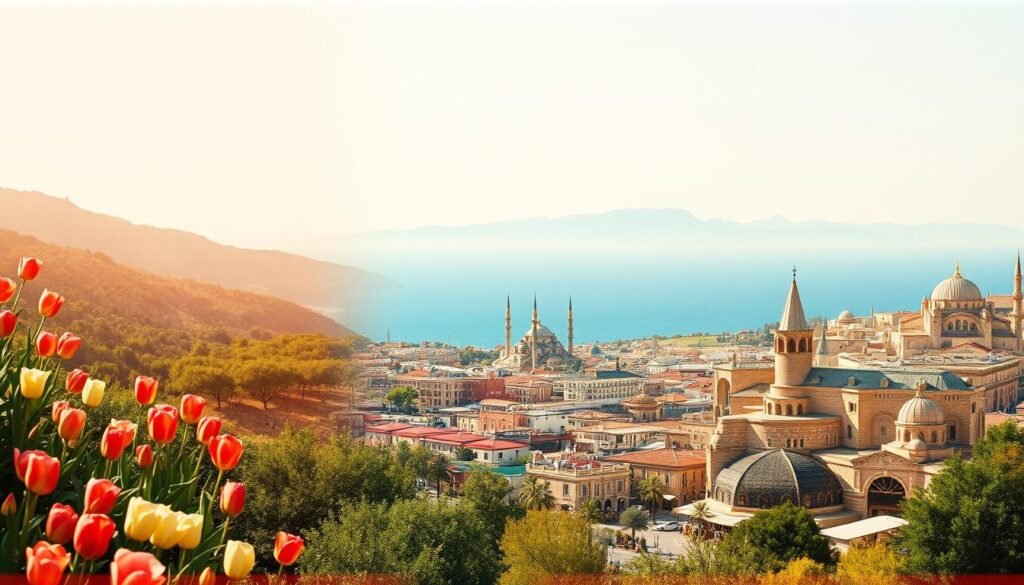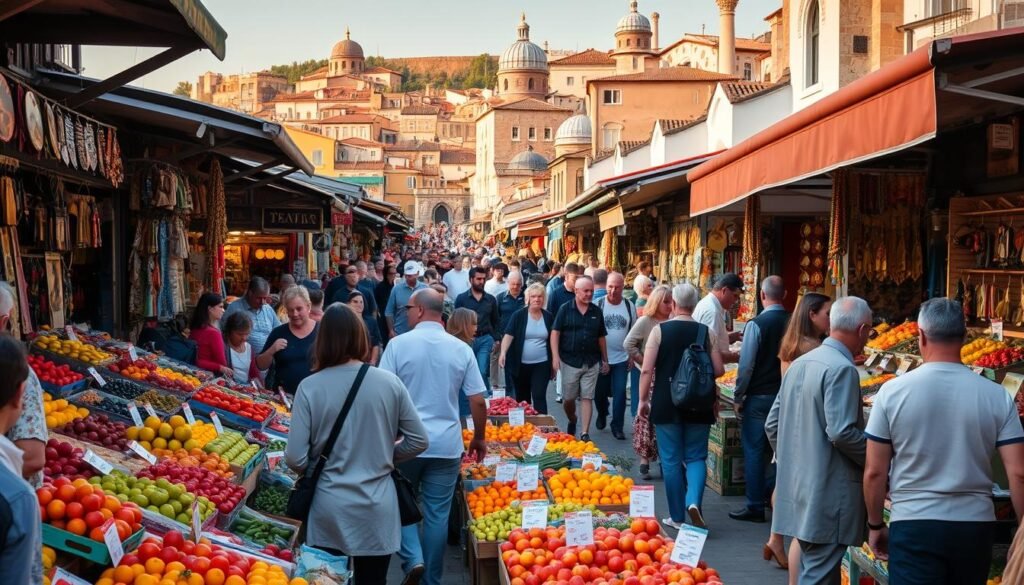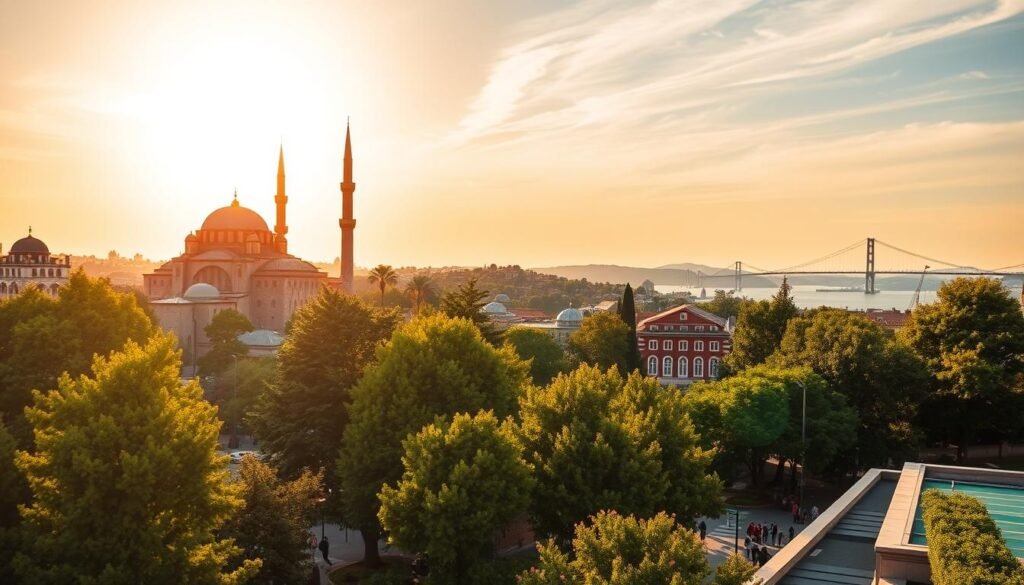Surprising fact: nearly half of Türkiye’s landscapes shift from sun-drenched beaches to snowy peaks within a single year, so planning your trip makes a huge difference.
I write this guide from my own planning experience to help you match goals with seasons. I show how weather, crowds, and costs change across the country and why those shifts matter for city breaks, hikes, or beach days.
Spring offers tulips in Istanbul and wildflower trails along the Lycian Way. Summer is for gulet cruises and lively festivals like Ephesus Opera and Bodrum music nights. Fall brings arts events and warm seas, while winter turns Cappadocia and Mt Erciyes into snowy escapes with great skiing and cozy hamams.
I also explain how moving holidays like Ramazan Bayramı and Kurban Bayramı can close sites and push prices up. Use this framework to pick the months that balance mild weather, lighter lines, and the experiences you want.
Key Takeaways
- Seasons shape weather, crowds, and prices across the country.
- Spring and fall often give the best balance for culture and mild weather.
- Summer suits beach and festival plans; winter is for skiing and quiet cities.
- Major religious holidays shift yearly and can affect openings and fares.
- Plan bookings for gulet cruises, festival tickets, and hot spots in advance.
The seasons in Turkey: weather, crowds, and what I plan for
I map my trips around what each season offers: flowers and mild temperatures in spring, full coast life in summer, calm cultural days in fall, and snowy escapes in winter.
Spring (March–May) brings long days, Istanbul’s Tulip Festival, and blooming trails like the Lycian Way. I chase mild temperatures and plan a rain back-up for museum afternoons and cozy cafés.
Summer (June–August) is peak heat along the Aegean and Mediterranean. Crowds and prices rise, so I book gulet cruises and beachfront stays early and pair beach breaks with night festivals in Ephesus and Bodrum.
Fall (September–November) feels like a sweet spot: warm seas, thinner crowds, and big arts events such as the Aspendos Opera and Antalya film festivals. I use these days for city culture and late swims.
Winter (December–February) means ski slopes at Mt Erciyes and Uludağ, snowy Cappadocia vistas, and steaming hamams. I keep plans flexible: snow can ground balloons but it also makes off-peak deals and quiet museums appealing.
Where to go by region: my picks by weather and season

I match each region with the season that best highlights its landscape and events. Below are short notes on what I choose and why, so you can pick an area that fits your plans.
Istanbul
Istanbul sings in March–May and September–November. I prefer these months for galleries, concerts, and fewer crowds. Weather is mild and museum lines shrink, which makes wandering simple and relaxed.
Cappadocia
I like May–July for blooming valleys and steadier balloon mornings. Winter is magical under snow, but balloons can be grounded on windy days, so I keep plans flexible.
Aegean & Mediterranean coast
For classic beach days I pick June–August. For warm seas with fewer people I aim for May or September. I often pair a coastal town with nearby ruins for variety.
Black Sea & Kaçkar Mountains
The Black Sea shines April–September. The Kaçkar Mountains offer cool highland trekking and emerald valleys in summer.
Eastern Anatolia
I head there June–September for clear roads and wild scenery. Winters are harsh across the highlands, so I avoid heavy snow months.
Want a quick planning link? Check my planner for the best time to visit.
Best time to visit Turkey: my month-by-month highlights

Each month here has a clear personality, and I match my plans to those shifts. Below I list what I aim for in each month so you can pick the months that match your goals.
January
I chase snow at Mt. Erciyes, Erzurum, or Kars for peak ski terrain. I also route a detour to Selçuk when the Camel Wrestling Championship runs near Ephesus.
February
February is my cozy city month: museums, a steaming hammam, and the Datça Almond Blossom Festival as the southern coast warms slightly.
March
Hiking returns in March–May and cultural rhythms shift with Ramazan. I catch Newroz celebrations and the Mesir Paste Festival while timing walks around fasting hours.
April
I plan for tulips in Istanbul, the Istanbul Film Festival, and ANZAC Day at Gallipoli. April is perfect for shoulder-season city breaks and fewer lines.
May
May means Lycian Way hikes and rooftop cafés buzzing. In even years I slot in the Mardin Biennial for a strong art fix.
June
Beaches and gulet cruises dominate June. I book Istanbul Music Festival tickets early and allow extra days for summer crowds and holiday surges.
July
July brings dawn hot air balloon flights over Cappadocia, Ephesus Opera & Ballet nights, and the Kırkpınar oil wrestling in Edirne.
August
I cool off along the coast with Bodrum’s festival stages and plan a Kaçkar Mountains trek for highland breezes away from the heat.
September
September keeps waters warm for late swimming and features Aspendos Opera & Ballet plus the Bosphorus Cup Regatta in Istanbul.
October
October wraps festivals and film programs—Antalya’s Golden Orange Film Festival—and offers Republic Day displays with pleasant city weather.
Want a quick planning link? See a short guide for the best time to visit.
Season, prices, and holidays: how I avoid crowds and closures

I track holidays and seasonal demand so my schedule stays calm and predictable. Peak, shoulder and low season each shape daylight, prices, and how packed beaches and towns feel.
Peak vs shoulder vs low season: Peak means long days, full beaches, and higher prices. Shoulder months give milder temperatures and thinner crowds. Low season brings bargains, but expect some coastal businesses and ferries to cut hours.
Ramazan Bayramı and Kurban Bayramı
These holidays shift with the lunar calendar and act like major domestic breaks. I always check dates: buses, flights, and hotels fill fast, museums can close, and holiday demand pushes rates up.
Weather tips by region
- I avoid inland midday heat by starting early and planning cool, indoor days.
- On the coast I book ferries and gulets ahead in summer; outside summer expect reduced services.
- I pack rain gear for the Black Sea and layer for extreme continental temperatures inland.
Bottom line: I split routes across regions, book key items early during holiday surges, and shift my dates by a day when dynamic pricing spikes. That keeps costs sensible and my days easier across the country.
Choose your perfect window: the best months for your kind of trip

Your ideal month depends on what you want from the trip—long swims, ridge climbs, gallery nights, or snowy slopes. Below I map clear windows for each travel style so you can pick without guesswork.best-time-to-visit-portugal
Beach lovers
June–September gives warm seas and long sunny days along the Aegean and Mediterranean. For fewer umbrellas and still-warm water, I aim for late May or September.
Hikers and adventure
I choose March–May or September–October for crisp mornings and steady trails on the Lycian Way and Kaçkar peaks. These months reduce heat and trail crowding.
City culture and festivals
Spring and fall—especially March–May and September–November—stack museum shows, concerts, and film programs in Istanbul and Antalya without the summer crush.
Snow and slopes
For skiing I plan December–February around Mt Erciyes, Erzurum, or Kars. I add a couple of Cappadocia days to soak in snowy valleys, while keeping a backup if balloons are grounded.
- I mix a beach leg with a short ruin run for variety.
- I nudge arrivals off peak weekends to find space on crowded beaches.
- Pack light layers for cool trail mornings and warm afternoons by the sea.
Conclusion
My trips begin with one clear question: which months match my must-see events and weather needs?
The short answer: pick spring or fall for culture and mild temperatures, summer for long coast days, and winter for slopes and snowy charm. I plan by months, not just seasons, and aim for March–May or September–October when cities feel lively but not crowded.
I anchor travel around festivals or a Cappadocia hot air balloon morning, then mix coast, mountains, and museums so a single rainy or hot day never derails the whole trip.
Lock dates a few weeks ahead for big holidays, pack layers, and you’ll get the exact days you want. When you’re ready, I’ll help fine-tune your route so every day lands right.best-time-to-visit-ireland





















